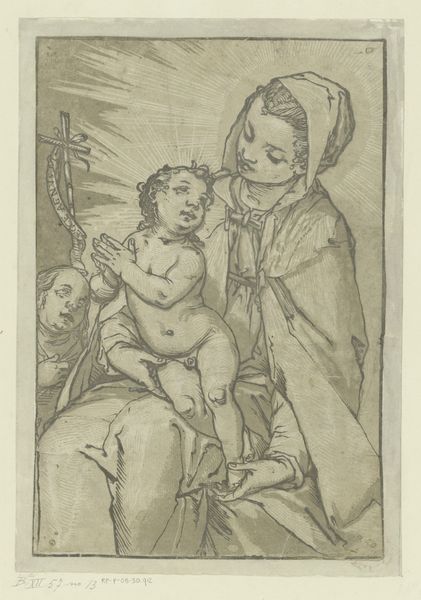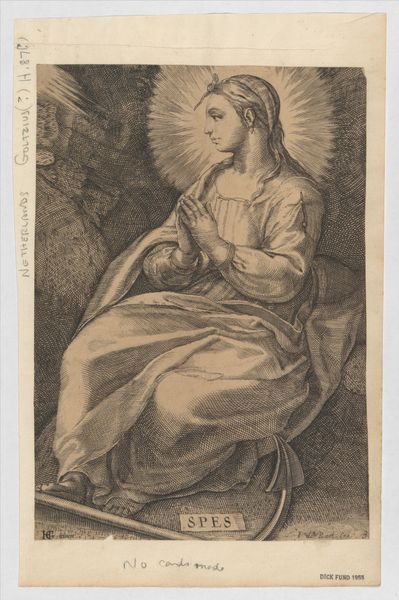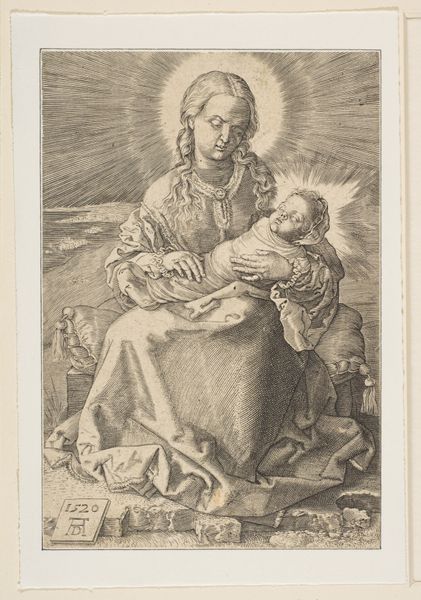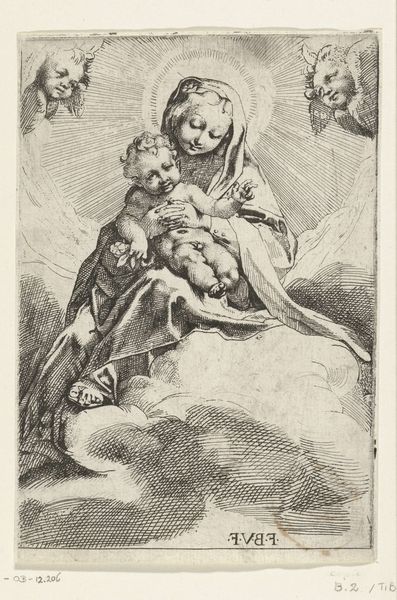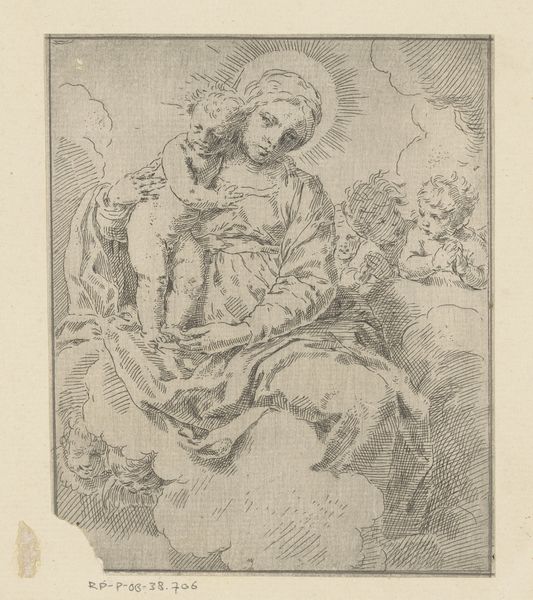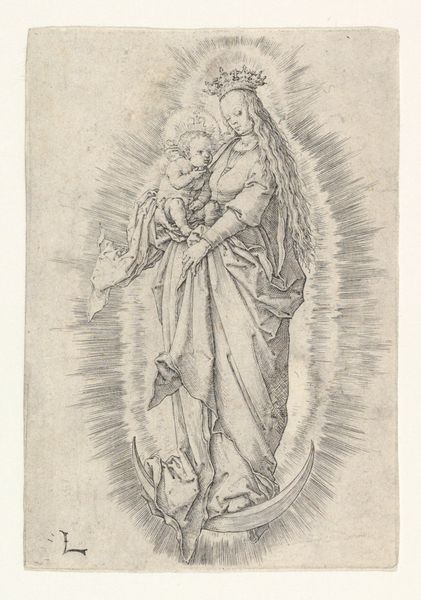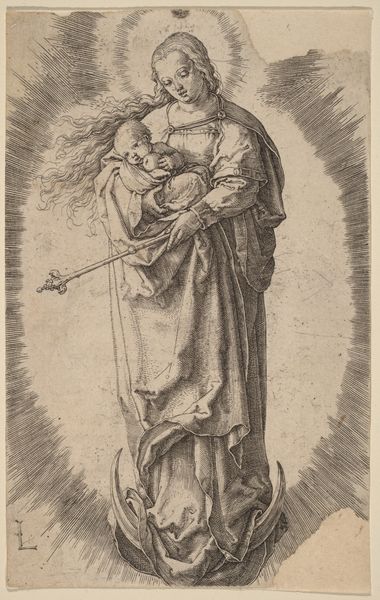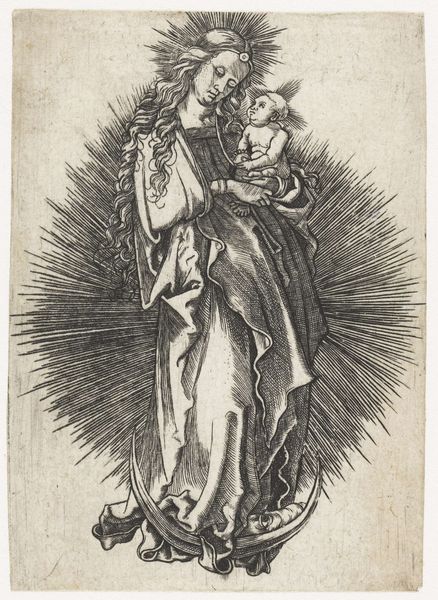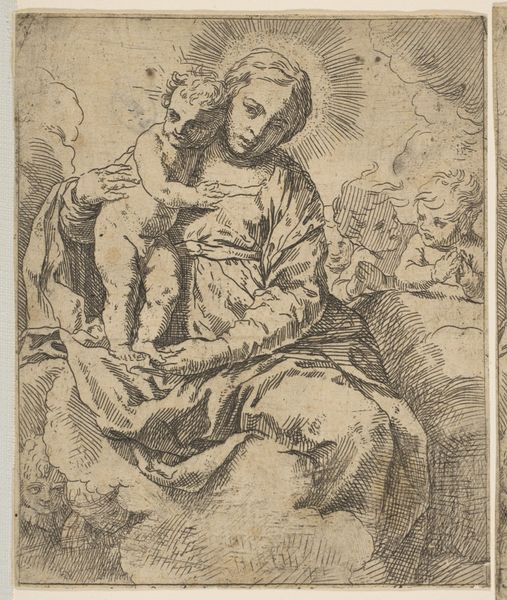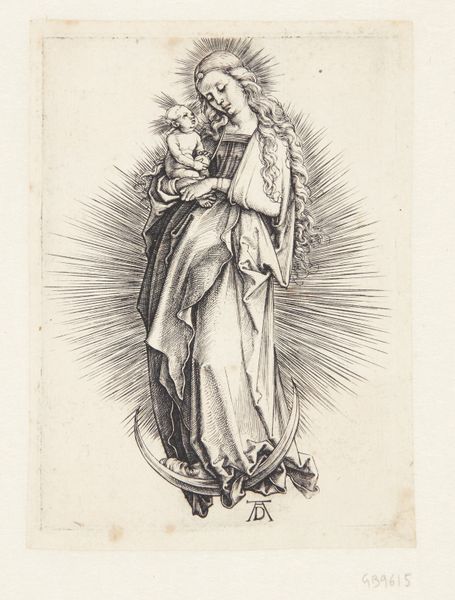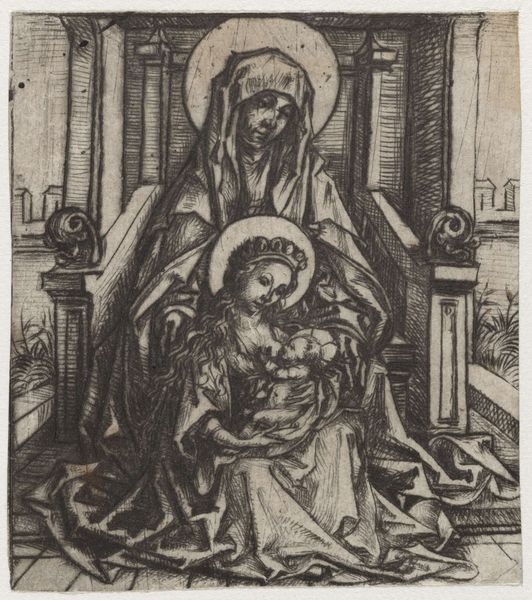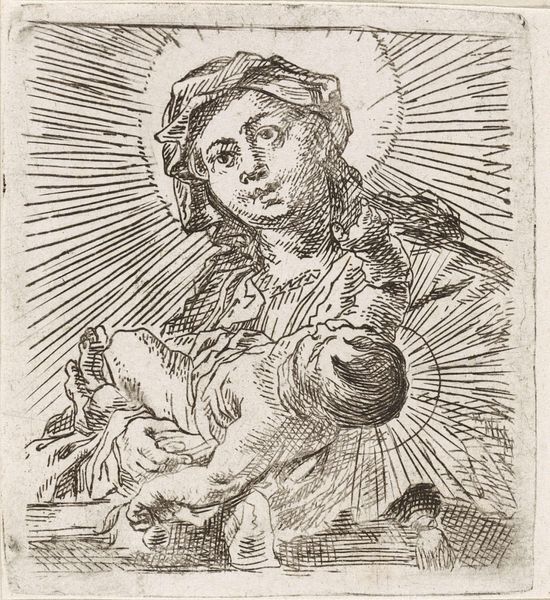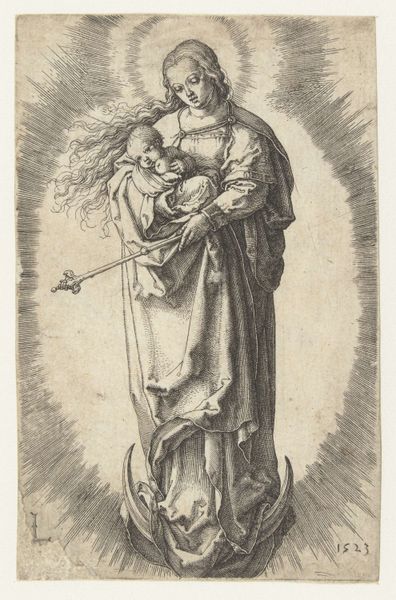
print, engraving
#
portrait
# print
#
figuration
#
line
#
history-painting
#
italian-renaissance
#
engraving
Dimensions: height 263 mm, width 206 mm
Copyright: Rijks Museum: Open Domain
Curator: What strikes me immediately is the sheer delicacy of line in this print; a real sense of subdued reverence pervades the image. Editor: Well, before we delve into interpretation, perhaps we should contextualize it. This is "Maria aanbidt het Christuskind," or "Mary Adoring the Christ Child," created around 1595 by Andrea Andreani. It resides here at the Rijksmuseum. Curator: Thank you. And isn’t it fascinating how Andreani has achieved such a nuanced tonal range through a simple engraving technique? The light emanating from the Christ Child and radiating behind Mary's head is cleverly rendered. Editor: Indeed. Considering Andreani’s process – the labor-intensive act of cutting into the metal, the printing itself, and the subsequent distribution of the image – it served as a vehicle for widespread devotional practice. Each impression connects the viewer to that initial act of creation, echoing through time. Curator: It is, undeniably, effective in conveying a tender moment. Notice the careful composition – Mary's downward gaze directs our attention to the infant Christ. The implied narrative invites the viewer to participate in this moment of adoration. Editor: Right, but look at the materiality. The tangible presence of the ink on paper—a material transaction mediating spiritual experience. What sort of paper was common? How much labor went into creating it, preparing the ink? These details shape the very way we experience the sacred image. Curator: Perhaps. Although, it’s the formal interplay of light and shadow, the delicate balance between form and void, which most arrest the viewer. Andreani transforms a potentially static scene into one alive with quiet emotion. Editor: It's precisely this intersection of material and meaning that captivates me. The creation, the craft of the paper, the ink, and the block - the physical conditions shape the way the world experiences that devotion. Curator: A compelling thought. I will confess I appreciate how Andreani allows this historical piece to exist. Thank you for bringing new considerations to its composition. Editor: My pleasure. Thinking about the production transforms this from a Renaissance object into a testament to the hands that crafted and circulated it; the human effort made to translate an idea.
Comments
No comments
Be the first to comment and join the conversation on the ultimate creative platform.
